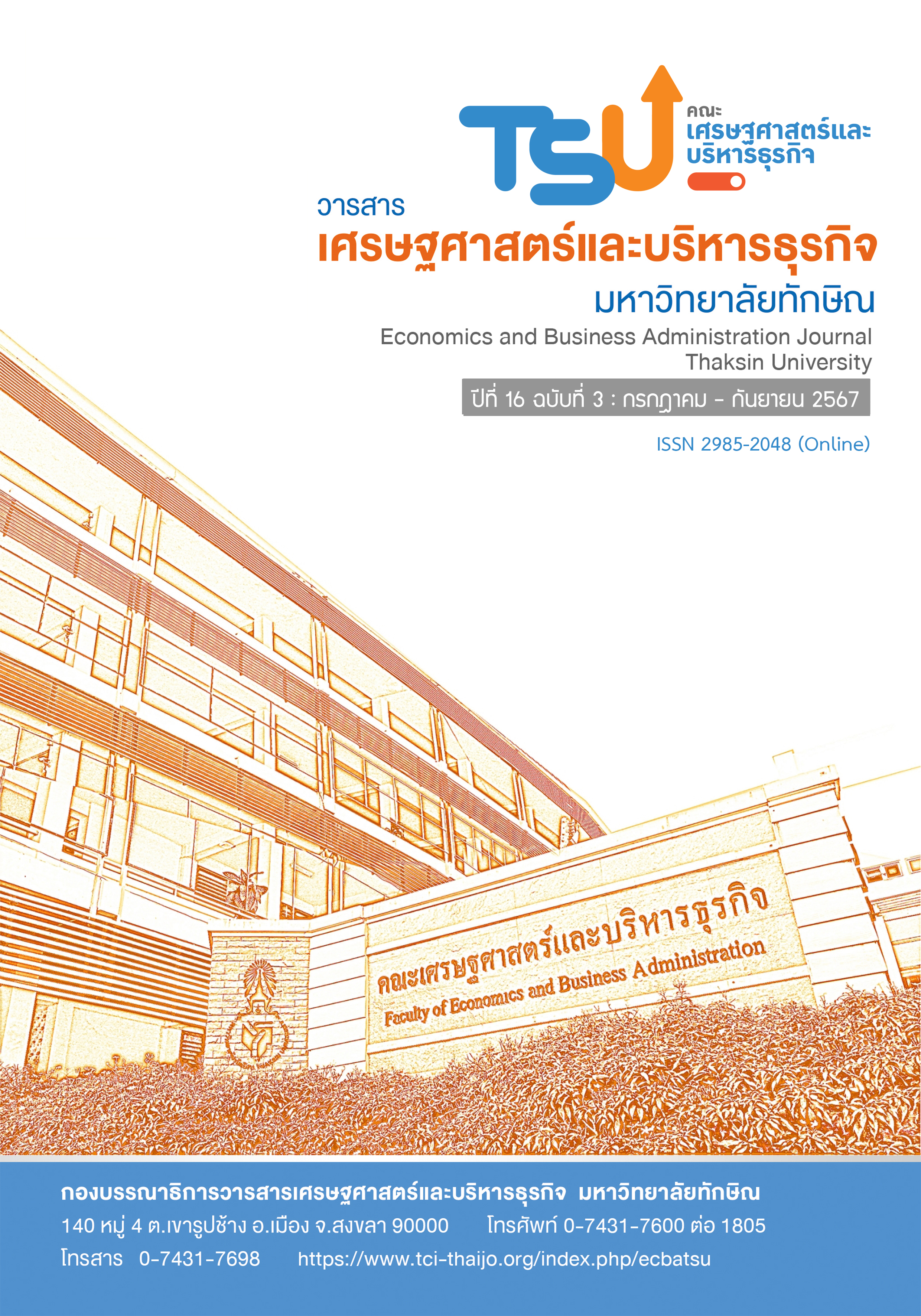Unveiling Student Segments: Leveraging Clustering Analysis of Registration Data for Enhanced Recruitment Strategies
DOI:
https://doi.org/10.55164/ecbajournal.v16i3.268195Keywords:
Clustering Analysis, Registration Data, Recruitment Strategies, Customized Approaches, K-meanAbstract
Recruiting the right students is crucial for higher education institutions to achieve their goals of attracting talented individuals and fostering academic success. This study aims to investigate the effectiveness of data-driven recruitment strategies in identifying target student populations and tailoring recruitment efforts accordingly. By utilizing K-means clustering analysis on a dataset of student profiles, this research identifies distinct clusters based on factors such as province of residence, parent occupation, and parent revenue. The findings reveal valuable insights into the characteristics and preferences of different student clusters, enabling the development of targeted recruiting strategies. The results indicate that a significant number of students in specific clusters are from Songkhla Province, have parents predominantly engaged in the private sector, agriculture, and fishery occupations, and come from families with moderate income levels. Building upon these findings, several recommendations for recruiting strategies are proposed. These include focusing marketing efforts in the identified regions, forging partnerships with local businesses, offering financial aid programs, and establishing connections with agricultural and fishing communities. This can involve targeted online advertisements, promotional campaigns in local schools, and active participation in career fairs or educational expos held in Songkhla Province. This study contributes to the field of higher education recruitment by leveraging data-driven approaches to identify target student populations and develop tailored strategies.
References
Ahuja, R., Jha, A., Maurya, R., & Srivastava, R. (2019). Analysis of Educational Data Mining. In Harmony Search and Nature Inspired Optimization Algorithms: Theory and Applications, ICHSA 2018. Springer Singapore.
Asif, R., Merceron, A., Ali, S. A., & Haider, N. G. (2017). Analyzing Undergraduate Students' Performance using Educational Data Mining. Computers and Education, 113, 177-194.
Ayele, W. Y. (2020). Adapting CRISP-DM for Idea Mining: a Data Mining Process for Generating Ideas using a Textual Dataset. International Journal of Advanced Computer Sciences and Applications, 11(6), 20-32.
Bandyapadhyay, S., Fomin, F. V., Golovach, P. A., Lochet, W., Purohit, N., & Simonov, K. (2023). How to Find a Good Explanation for Clustering? Artificial Intelligence, Volume 322, 103948. https://doi.org/10.1016/j.artint.2023.103948
Celebi, M. E. (Ed.). (2014). Partitional Clustering Algorithms. Springer, 147-192
Chiu, T. K. F., & Chai, C. S. (2020). Sustainable Curriculum Planning for Artificial Intelligence Education: A Self-Determination Theory Perspective. Sustainability, 12 (14), Article 5568. https://doi.org/10.3390/su12145568
Davies, D. L., & Bouldin, D. W. (1979). A Cluster Separation Measure. IEEE transactions on Pattern Analysis and Machine Intelligence, (2), 224-227.
Dutt, A., Aghabozrgi, S., Ismail, M. A. B., & Mahroeian, H. (2015). Clustering Algorithms Applied in Educational Data Mining. International Journal of Information and Electronics Engineering, 5(2), 112.
Dutt, A., Ismail, M. A., & Herawan, T. (2017). A Systematic Review on Educational Data Mining. IEEE Access, 5, 15991-16005.
Peña-Ayala, A. (2014). Educational Data Mining: A Survey and a Data Mining-Based Analysis of Recent Works. Expert Systems with Applications, 41(4), 1432-1462.
Fahad, A., Alshatri, N., Tari, Z., Alamri, A., Khalil, I., Zomaya, A. Y., & Bouras, A. (2014). A Survey of Clustering Algorithms for Big Data: Taxonomy and Empirical Analysis. IEEE Transactions on Emerging Topics in Computing, 2(3), 267-279.
Goyal, M., & Vohra, R. (2012). Applications of Data Mining in Higher Education. International Journal of Computer Science Issues (IJCSI), 9(2), 113.
King, R. S. (2015). Cluster Analysis and Data Mining: An introduction. Mercury Learning and Information.
Muhajir, D., Akbar, M., Bagaskara, A., & Vinarti, R. (2022). Improving Classification Algorithm on Education Dataset using Hyperparameter Tuning. Procedia Computer Science, 197, 538-544.
Ministry of Higher Education, Science, Research and Innovation (MHESI). (2023). Number of New students, Academic Year 2021, Semester 1 Classified by Province. https://info.mhesi.go.th/stat_std_new.php?search_year=2564&download=7085&file_id=202208151109.xlsx.
Papamitsiou, Z., & Economides, A. A. (2014). Learning Analytics and Educational Data Mining in Practice: A systematic Literature Review of Empirical Evidence. Journal of Educational Technology & Society, 17(4), 49-64.
Plotnikova, V., Dumas, M., & Milani, F. P. (2022). Applying the CRISP-DM Data Mining Process in the Financial Services Industry: Elicitation of Adaptation Requirements. Data & Knowledge Engineering, 139, 102013. https://doi.org/10.1016/j.datak.2022.102013
Downloads
Published
How to Cite
Issue
Section
License
Copyright (c) 2024 Faculty of Economics and Business Administration, Thaksin University

This work is licensed under a Creative Commons Attribution-NonCommercial-NoDerivatives 4.0 International License.




